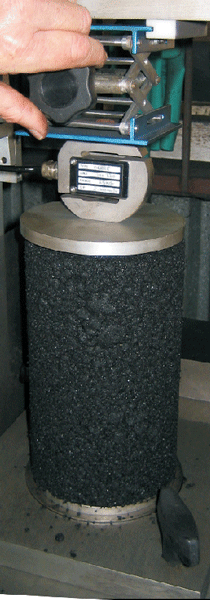Contact us now to find out more. One of our experienced specialists would love to see how we can help you with your business process control measurement requirements.
Edinburgh Cohesion Tester (ECT)
A Simple Test for a Sticky Problem
The Edinburgh Cohesion Tester (ECT) was developed by Edinburgh University with the financial support of British Coal Utilisation Research Association, the UK Department of Trade and the UK coal industry to enable rapid assessment of a coal’s handling characteristics. It was designed to measure the unconfined compression strength needed to collapse a column of coal after it has been consolidated under a known pressure.

The findings of Edinburgh University and other researchers have shown that the unconfined strength is the best measure for handle ability problems associated with arching in bins or rail wagons. The influence of moisture and stress is characterised by the Stress Moisture-Cohesion (SMC) function.
From this function the maximum unconfined stress of a coal sample can be determined. The critical moisture is the moisture at which this maximum occurs. The maximum unconfined stress and the critical moisture are the most important handling properties of a coal product and the ECT allows these to be measured effectively. Based on the work conducted at Edinburgh University and in a recent
ACARP project (C15070) an ECT test procedure has been developed that will enable the Australian coal industry to quickly assess the handleability of their coals. The speed of testing of the ECT permits a substantial increase in the available information on the sensitivity of coal handleability to different key coal quality parameters.
In the recent ACARP project 19 Australian coals were tested. It was found that all coals tested had unique SMC functions and that the size distribution (not just the fines content) and ash content significantly influenced the handle-ability of the coals. The ECT is a superior test to the Durham Cone for investigating the causes of handle-ability problems as it gives a better discrimination between coals that may or may not have a handle=ability problem. A current ACARP project has shown that the cohesive strength of the -50 mm material is a good indication of the likelihood of when blockages may occur in rail wagons that will require jack hammering to start coal flow.
Coming Soon.
Thank you for your patience as we update our website.
- a range of weights that are placed on the loading arm to achieve a wide range of consolidation loads,
- a three piece split mould used to minimise the disturbance while setting up the sample. The mould is coated to reduce wall friction during vertical consolidation,
- support of the mould on a spring loaded base to effectively consolidate the cola from top and bottom simultaneously and also to minimise wall friction effects,
- sample height correction to avoid interference with the initial sample (cutting or adding material after consolidation,
- a digital display with a peak hold to record the maximum vertical force required to collapse the sample,
- accurate load cell to measure the force.
The ECT has been used by Edinburgh University to undertake extensive studies of many coals to discover key phenomena relating to handle-ability. The tester has been improved over the years of research with several new features, which significantly improve the test procedure and results, and substantially overcome the main problems encountered in other similar testers. These features include:
Supplied under licence to Edinburgh University by:
Ultra-Dynamics Pty Ltd, ask@ultradynamics.com.au Tel: +61 7 3282 8748
Edinburgh Cohesion Tester (ECT)
Maximum unconfined stress of a coal sample
Effectively measure the maximum unconfined stress and the critical moisture
Quickly assess the handleability of your coal

